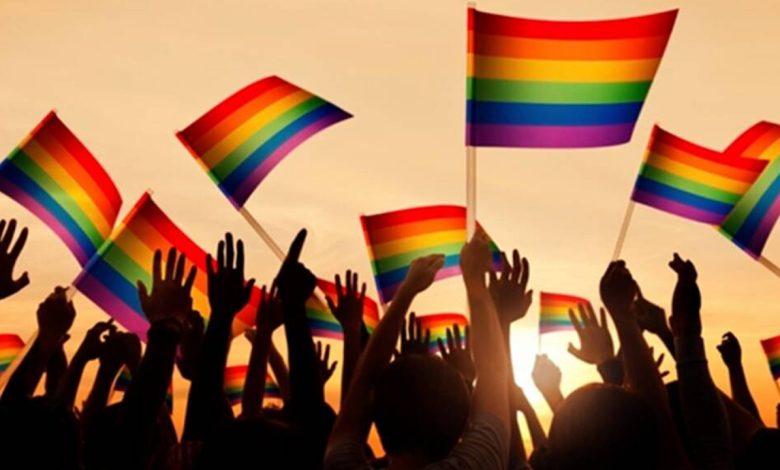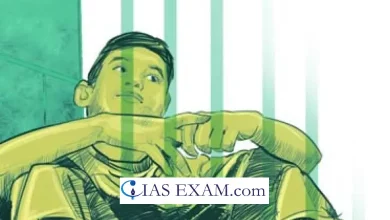Daily Current Affairs for UPSC
LGBTQIA+ community
Syllabus- Government Policies & Interventions [GS Paper-2]

Context- The inclusion of the LGBTQIA+ community in the creation of nine universal restrooms in various locations throughout the Supreme Court’s main and additional building complex has been initiated under the direction of the Chief Justice of India.
Key Highlights
- The gender-neutral online appearance portal that went live earlier this year had also been made.
- Additionally, there was active consideration of a proposal to expand the GSICC’s scope to include internal complaints committee and gender and sexuality sensitization.
- Regulations would need to be updated in a way that kept up with the changing times and the changing needs of society and the institution.
- These milestone drives are focused on sensitisation towards incorporation of LGBTQIA+ people groups to guarantee a stately workplace at the peak court.
About LGBTQIA+ Community
- According to Section 377 of the Indian Penal Code in 1861, Britishers considered sexual activities “against the order of nature,” which included all homosexual activities, to be illegal.
- The first study of homosexuality in India, titled “The World of Homosexuals,” was published by Shakuntala Devi in 1977.
- In 1994, they were legitimately conceded casting a ballot rights as a third sex.
- The Supreme Court of India decided in 2014 that transgender people should be considered the third gender.
- In 2017, the High Court gave the country’s LGBTQIA+ people group the opportunity to communicate their sexual direction securely.
- The Right to Privacy ensured that an individual’s sexual orientation was protected.
- On September 6, 2018, the section of Section 377 that criminalized consensual homosexual activities was overturned by the Supreme Court.
What Are the Challenges Facing the LGBTQIA+ Community in India?
- In 2019, Parliament passed the Transgender Persons (Protection of Rights) Act to protect transgender people’s rights, their welfare, and other related issues.
- Discrimination in society: LGBTQIA+ people frequently encounter discrimination in a variety of settings, including the workplace, housing, and healthcare.
- They may have trouble living openly and safely as a result of this. In addition, discrimination can result in fewer job opportunities, poverty, and a lack of basic necessities.
- Absence of Participation: LGBTQIA+ people are not included in mainstream society and are frequently underrepresented in the media, politics, and governance.
- They may find it challenging as a result to have their needs met and their voices heard. Additionally, a lack of understanding and acceptance of the community may result from this lack of representation.
- Mental Health Problems: Hate crimes against LGBTQIA+ people, including physical and verbal abuse, bullying, and harassment, frequently occur. This can have an impact on one’s physical and mental health as well as the community’s sense of fear and insecurity.
- Rural LGBTQIA+’s Unheard Voices: There are a number of real-world and online platforms where urban LGBTQIA+ people can express themselves.
- However, because of an absence of openness, solace, and web network, rustic LGBTQIA+ individuals frequently stifle their sentiments on the grounds that declining to wed prompts further maltreatment.
- Homelessness: Most of destitute LGBTQIA+ youth are tossed out of their homes since they are eccentric, or they took off to get away from misuse.
- During crucial stages of development, they are denied access to education and social support. They frequently engage in risky sexual behavior and drug abuse in the absence of financial support.
What should be the next step?
- Steady Strategies and Regulations: LGBTQIA+ people can be shielded from violence, hate crimes, and discrimination through supportive government policies and laws.
- Policies that ensure LGBTQIA+ people have access to healthcare that is sensitive to their needs and protects the rights of transgender people are examples of this.
- Trying to be a better parent: Because human society is only a sphere that surrounds us, our parents must be willing to accept their children’s identities in order for society as a whole to embrace diversity and each child’s uniqueness.
- Our Diversity and Pride: It is essential to establish an accessible and open platform for LGBTQIA+ youth to collaborate, share, and interact. Spaces like Gaysi and Galaxy have been made possible by platforms like these.
- These platforms should be used to spread the word about the Pride Month and Pride Parade Initiative at all levels.
- Equal Treatment from Special Treatment: Understanding that LGBTQIA+ individuals are not aliens, that they are not ill, and that their sexual preference is innate is essential. Homosexuality is an ordinary peculiarity, not a handicap.
- They ought to be treated in the same way, not in a different way, and once they are included in Indian society as equals, they will fully participate in the collective development of the country.





.png)



